Last Updated on 04/04/2023
Rouen old town is full of half-timbered houses and in general a nice, green city. I cannot remember cities of this size with so many unkilled half-timbered houses. It is all the more surprising that the city had a rather turbulent life (they could have burned or destroyed everything) and a good income (they could have rebuilt everything in stone).
Upper Normandy. Seine-Maritime. Rouen region map
Upper Normandy. Seine-Maritime map 1
Lower Normandy. Calvados and Orne. What to visit
Etretat
Fecamp
Other Normandy Topics and Maps – # Normandy.
We just walked around the city, going to churches, and at the end went to an art museum for an exhibition of the impressionists. The permanent collection of the museum (for 4 euros) costs real so much, you can see some excellent paintings and many mediocre ones. Another museum is located in the church next to the art museum, where various antique wrought iron products are exhibited.
But I think Rouen is rather a city for leisurely walks on a warm, clear day off, when musicians are playing in the streets and people are sitting in cafes.

A little history
The place was very favorable for trade: a large river, next to the sea, the tides of which reach Rouen, at the same time far enough to suffer less from raids. The Gaulish name Ratumacos, by the way, means “place to exchange”. In the 3rd century there were the Romans, and already from the 4th century there were bishops, and not simple ones, but saints.
Since the 10th century, the Normans settled here, the city became the capital of the duchy. Along with trade, crafts also actively developed: weaving, felting and dyeing, tanners. In the 12th century, the city received the right to self-government.
In the 13th century, the region again became part of the French kingdom. The city’s population grew to 30-40 thousand, making it the second largest in France.
In the 14th – 17th century, the city was in trouble, such as: an epidemic of plague, flooding, the Hundred Years War with the siege of the British in 1419. Until 1449, the city remained in British hands. Despite all this and the religious war, the city flourished again in the 18th century.
Rouen old town
We start the route from the Clock Tower (14th century, one of the oldest mechanism in France).

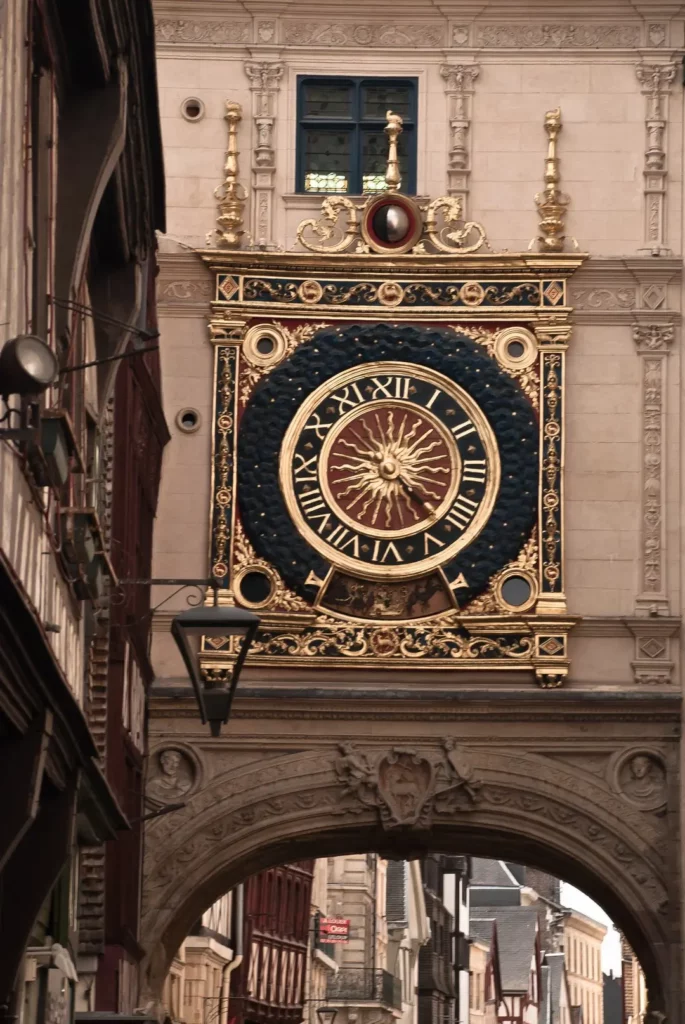


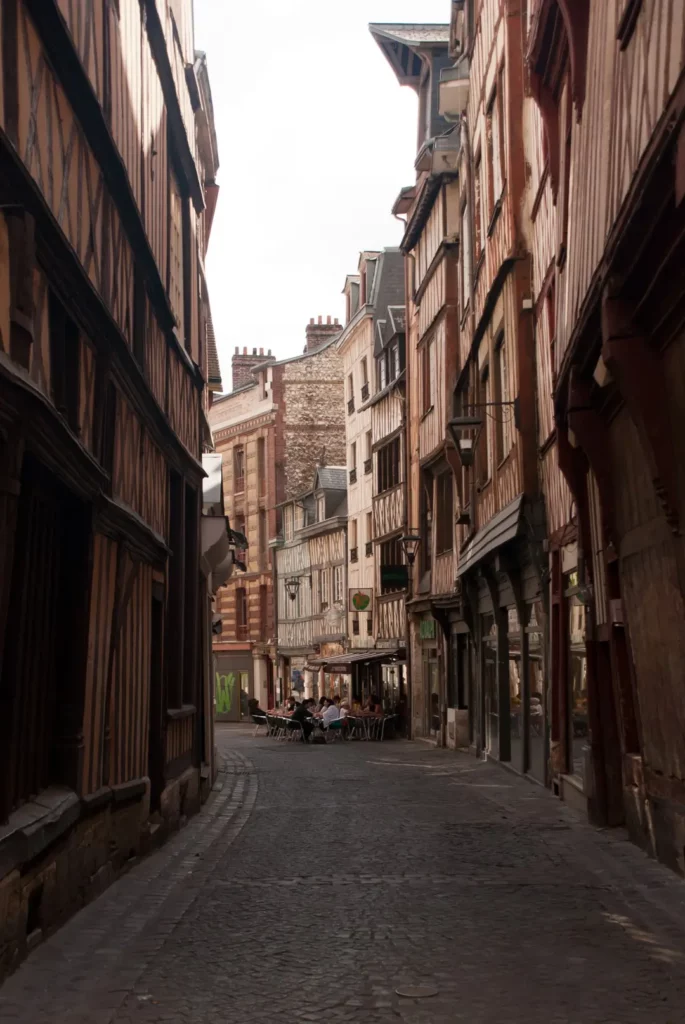
We go along this street to the cathedral.

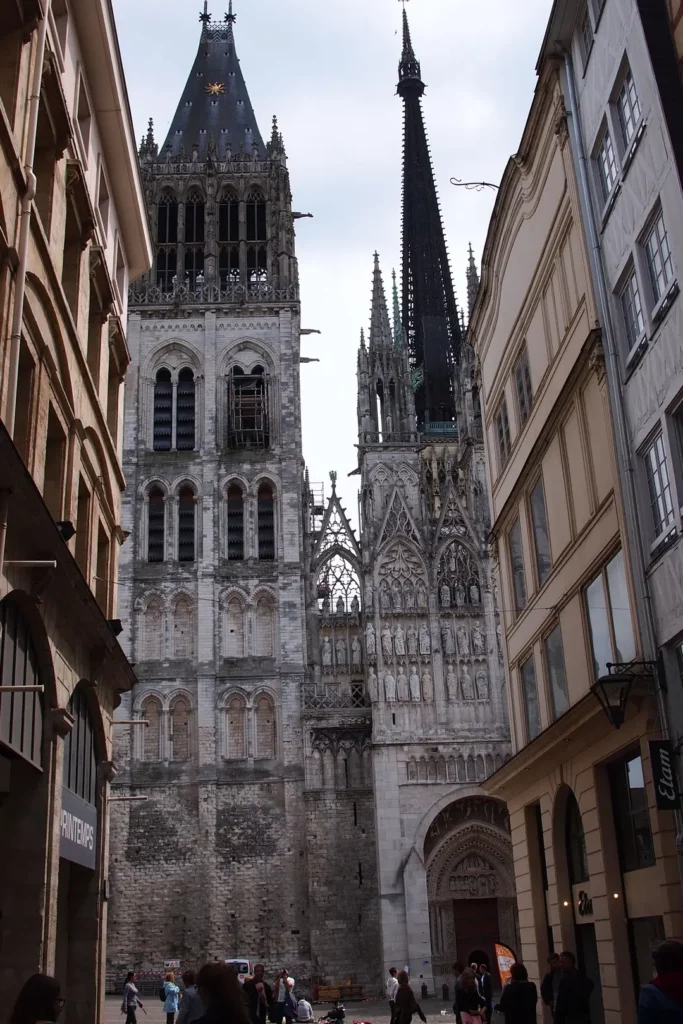
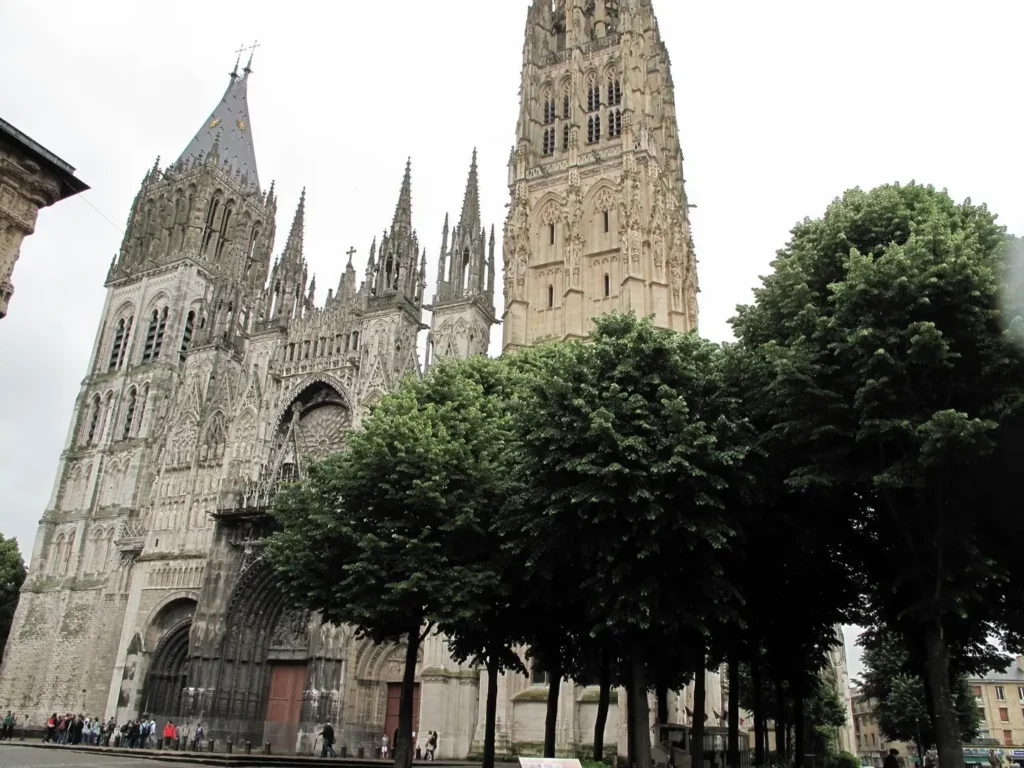
From this Renaissance building opposite the cathedral (now the tourism office) Monet painted his series “Rouen Cathedrals” (30 paintings).

Rouen Cathedral
The construction of the cathedral in the form in which we see it now began in 1150. It was completed quite quickly by medieval standards: in 1240 it was already finished. However, it was still rebuilt and completed in detail, so the facade looks asymmetrical.







Preserved stained glass windows of the 13-15th centuries.



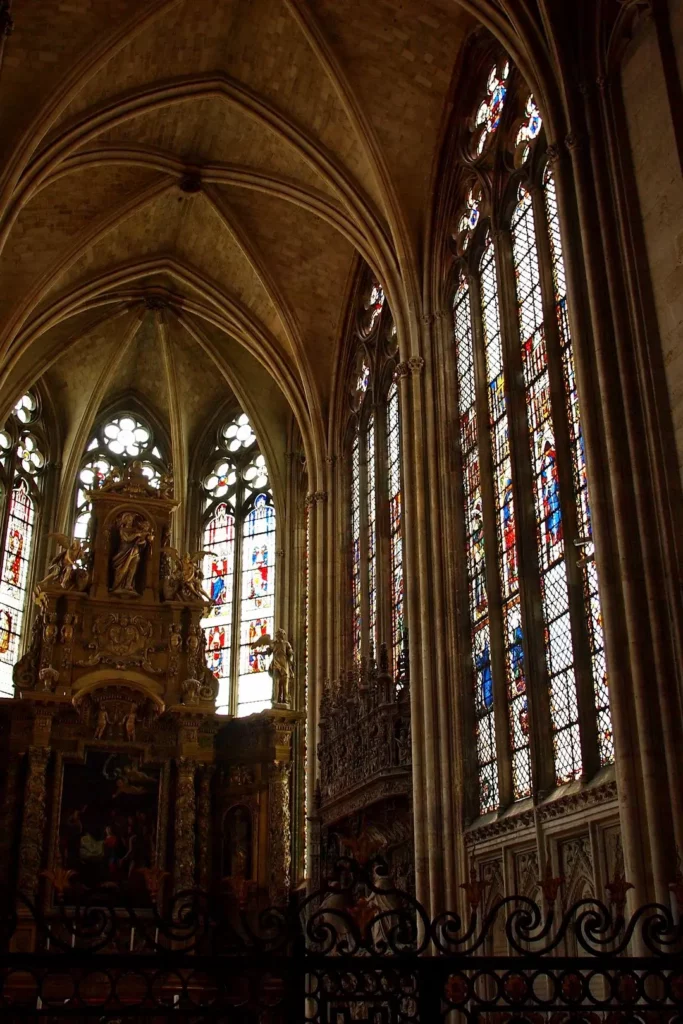

Side entrance.





Fachwerk in Rouen
Let’s go further. Fachwerk in Normandy is curious, upright, with fewer crosshairs than the Germans and with less decoration. But nevertheless, the principles remain, and you can estimate the age by the appearance of the building.
Who wants to delve into the history of half-timbered houses – read here.




We go to the church of St. Maclou (15-16th century, late Gothic).




On rue Damiette, houses have been preserved even from the 13-14th century (number 41), the 15th century (number 2 and 16), the 16th century (number 7) and several from the 17th and 18th centuries. But there are also many old houses on other streets, it’s just nice to walk here.

If you manage to look into some courtyard, then there is also a half-timbered house.
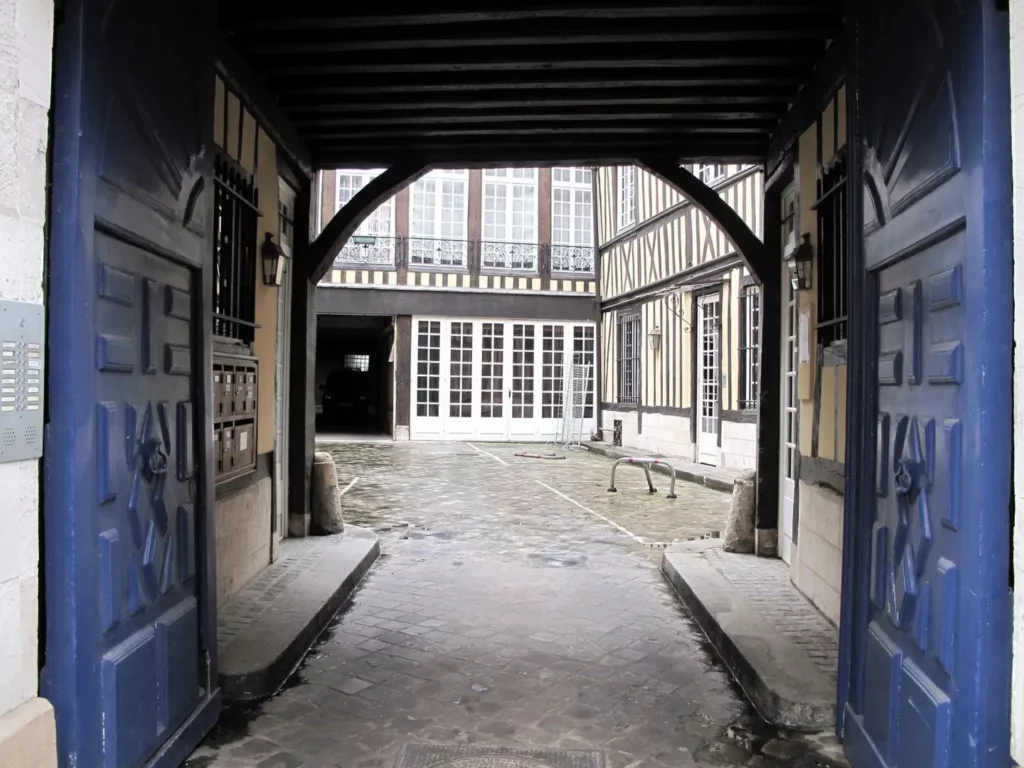


If you look into one unattractive gateway, you can find a large courtyard planted with trees.


Follow me
You would never have guessed what it was. And this was … a cemetery. During the time of the plague, there were too many of the dead, so they set up an ossuary. There were no windows on the second floor; the bones were kept there. Closer to our time, the cemetery was closed, the buildings were reconstructed. Now there is an art school.
Church of st. Maclou from behind, the spire of the cathedral is visible in the background.

We go for the next church – St. Ouen Abbey.




The church is very large. It took a long time to build it – from the 14th century to the 19th century. There was a temporary exhibition of a contemporary artist inside, everything was partitioned off, so it was not possible to see inside. Behind it is the mayor’s office, around a park with a playground.


I saw such narrow houses in several French cities.

In the end, let’s look at the Seine.

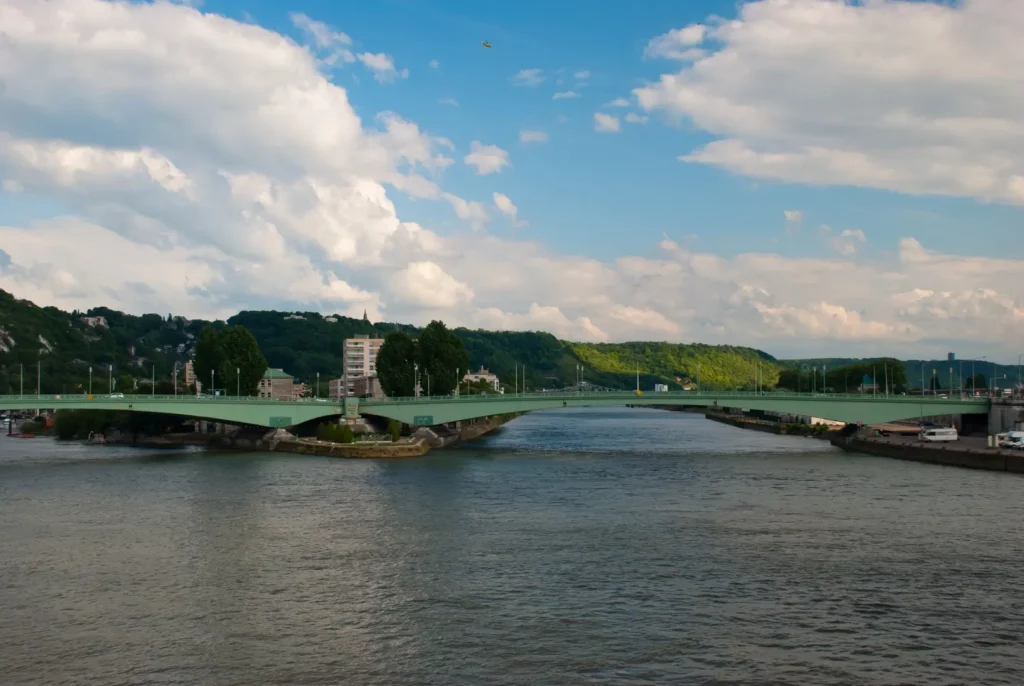
See maps for museums and surrounding attractions: Map 1, Map 2.
Other Normandy Topics and Maps – # Normandy.
Do you enjoy the site without cookies? This means that I work for you at my own expense.
Perhaps you would like to support my work here.
Or change your cookie settings here. I don’t use personalized ads






